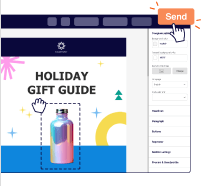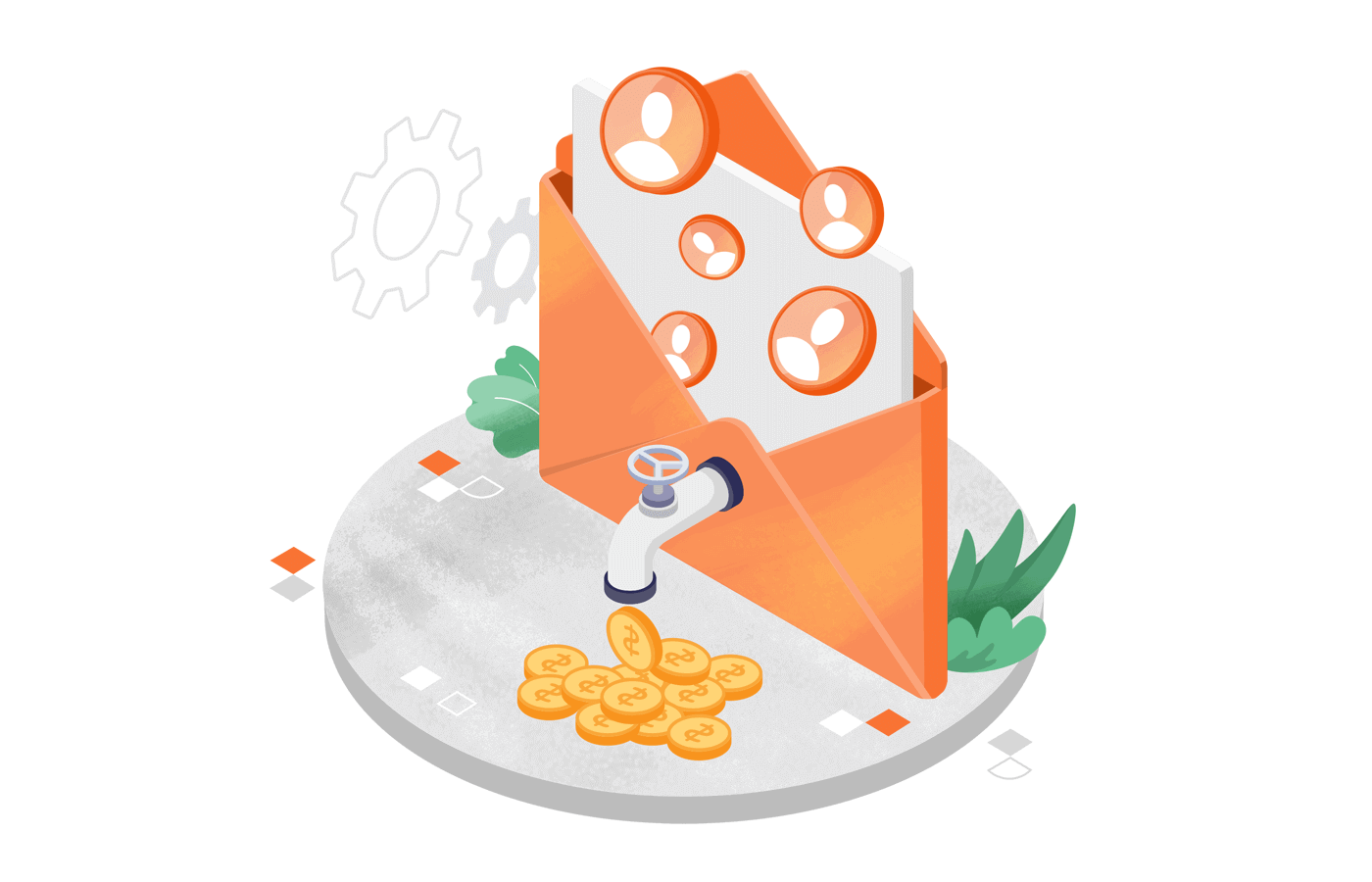Generating leads through email marketing efforts involves creativity, optimization, and a deep understanding of your audience’s needs and behaviors. If you’re serious about sales leads, we’ve curated 12 best practices that will help you get better results from your campaigns.
From A/B testing to automation and gated content, we’ll uncover tried-and-tested lead generation techniques to level up your marketing game while building meaningful connections with your audience. So, let’s get started.
What is Email Lead Generation?
Now, let’s look at how to start the email marketing lead generation process.
Think of lead gen email marketing as gardening. Each lead you capture has the potential to evolve into a valuable customer, like a seed that grows into a thriving plant.
It’s a cost-effective and highly efficient way to engage your target customers and move them further into the buyer’s journey by providing relevant information, updates, and offers.
What makes your email lead generation campaigns successful?
| Factors | Action |
| Enticing offer | Develop compelling offers like free ebooks, exclusive webinars, or discount codes; |
| Clear signup form | Your forms should be concise, with easy-to-complete fields, and placed prominently on your web pages; |
| On-point popup | Add relevant popups based on user behavior, such as when they’re about to leave your site or have been browsing for a particular duration |
| A/B test | Test all elements of your email capture strategies, like the copy and design of your sign-up forms and the placement of CTAs; |
| Social media promotion | Share about incentives on social media platforms to drive new traffic to your sign-up pages; |
| Compelling CTA | Create clear and compelling calls-to-action that encourage visitors to sign up. |
Want to implement these ideas to kickstart your own email campaign for generating leads? Continue reading, and we’ll break them down and give more tips.
Importance of Having an Email Lead Generation Strategy
Most businesses prioritize lead generation because it helps in increasing sales revenue. 53% of marketers spend at least half their marketing budget to generate email leads.
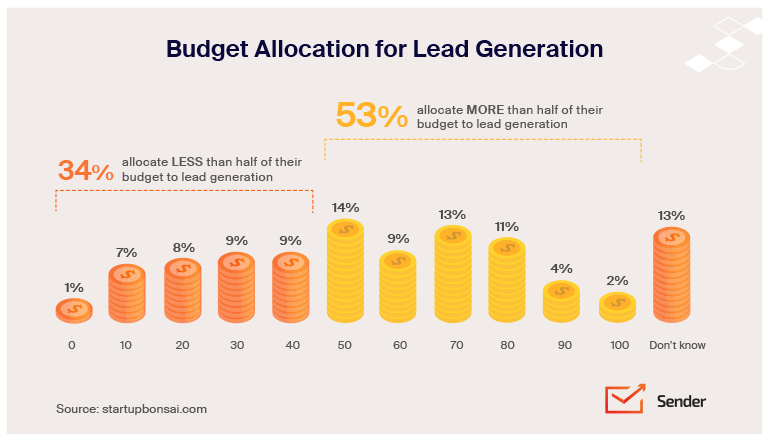
Email lead generation can nurture qualified prospects through the sales funnel from initial interest to loyal customers and even brand ambassadors.
Here are some of the reasons why you should have an email lead generation strategy:
- Maximizing ROI. Businesses can attract and convert potential customers into loyal advocates faster, boosting revenue and ROI;
- Targeted engagement. Email automation lets you segment and target your audience precisely through content that resonates with their interests and needs. This personalized approach increases the likelihood of conversions;
- Building trust and credibility. Email is a direct and intimate channel that helps build trust. By consistently delivering valuable content, such as informative email newsletters, industry insights, and exclusive offers, you can position yourself as a reliable authority in your niche;
- Automation and scalability. With marketing automation tools, you can set up automated workflows, including welcome emails, follow-ups, and drip marketing campaigns, ensuring timely and relevant communication at scale, even as your lead database grows;
- Measurable and data-driven. With advanced analytics and reporting tools, businesses can gain valuable insights into open rates, click-through rates, conversions, and other key metrics. This helps optimize your email marketing strategy for better results.
12 Proven Email Lead Generation Best Practices
As you saw above, generating leads involves a lot of planning. To make it easier for you, we’ve outlined 15 best practices for your lead generation campaign. Let’s look at each one.
Optimized Opt-in Forms
Optimized opt-in forms are critical for converting casual website visitors into paying customers. A well-timed email opt-in form can effectively power your lead generation engine.
They’re not just a medium to capture information but are also critical to guiding prospects further along their journey.
Your opt-in forms should enhance the user experience instead of being intrusive and ensure potential customers don’t drop off halfway through the signup process.
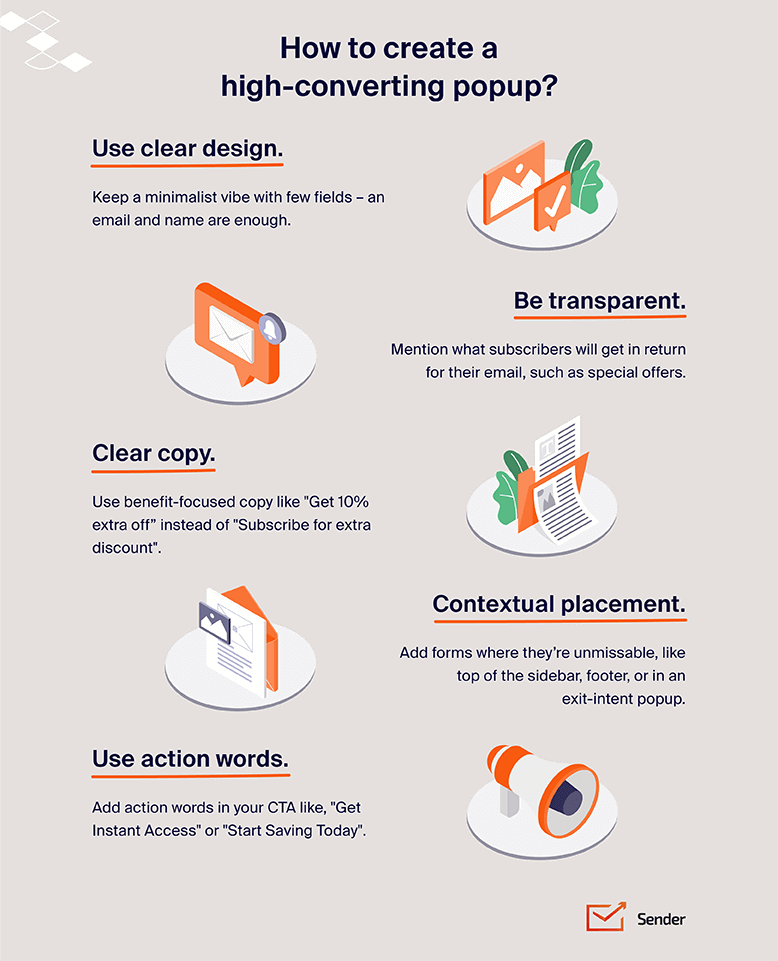
As an extra measure for collecting high-quality leads, implement double opt-in in your email list building. You won’t get more leads, but you’ll be sure they’re real, interested people.
Build a Quality Email List
Your email marketing success depends on a high-quality list. Here’s how to attract quality leads:
- Offer multiple signup opportunities. Include sign-up forms on your website (blog, homepage, checkout), social media, and during webinars or events;
- Use content upgrades. Offer valuable, gated content (checklists, guides) in exchange for email signups;
- Host online workshops. Attract engaged leads by offering webinars with valuable information and an email signup option;
- Use double opt-in. Ensure genuine signups, comply with privacy laws, and protect your sender reputation;
- Segment your list. Categorize subscribers for targeted campaigns and higher engagement;
- Conduct regular list audits. Remove inactive subscribers to maintain a responsive audience.
Looking for an easy-to-use email lead generation software? With Sender, creating professional emails is a piece of cake.
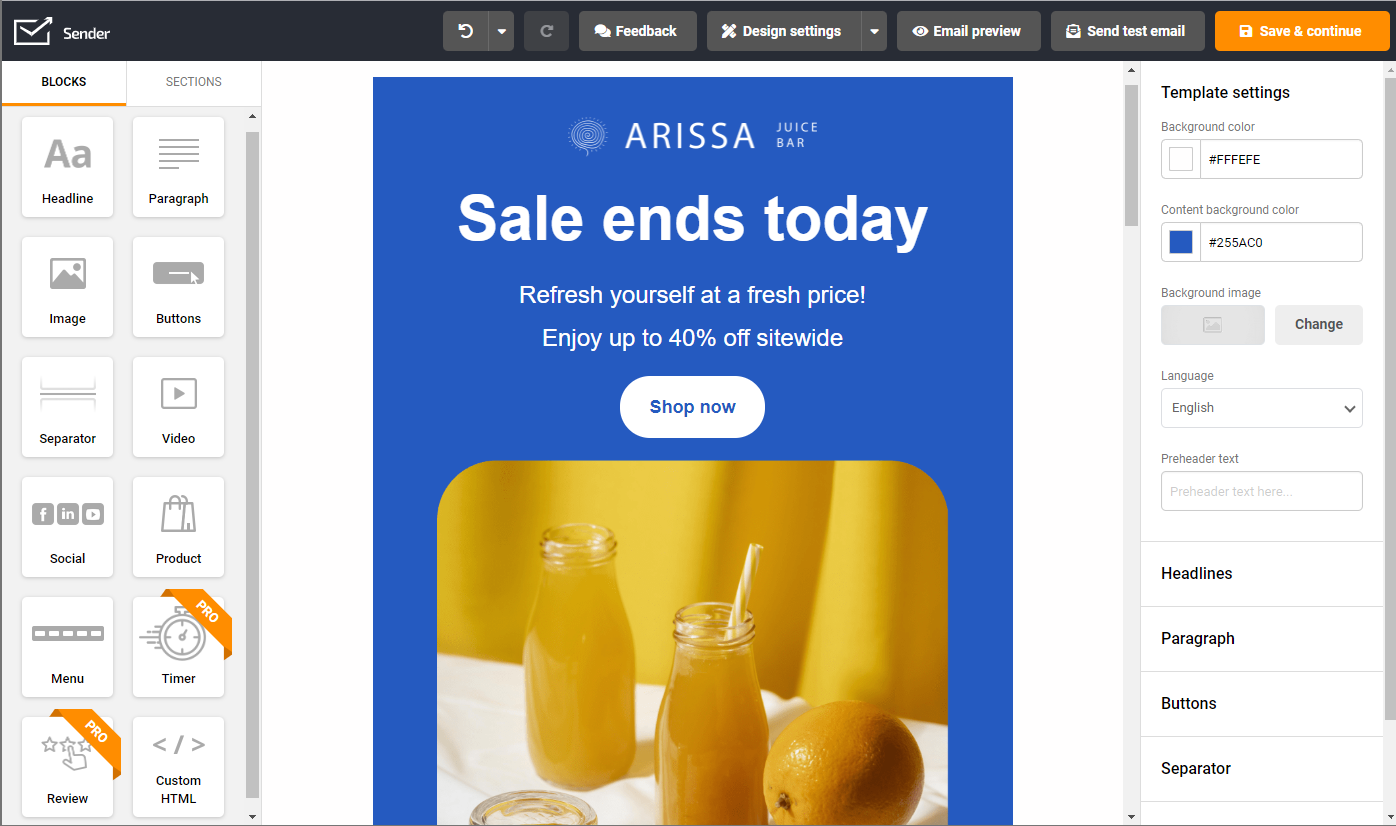
Use Personalization
Personalized email marketing is highly effective for driving conversions. Here’s how to personalize your lead generation email campaigns:
- Segment your list. Group subscribers based on demographics, interests, or behavior for targeted content;
- Use behavioral triggers. Send automated emails based on specific actions like website visits or form submissions;
- Employ dynamic content blocks. Show different content based on preferences, purchase history, or browsing history;
- Add user-generated content. Share reviews and testimonials to build trust;
- Send birthday/anniversary emails. Offer exclusive discounts for special occasions;
- Recommend related products. Suggest items based on past purchases or browsing behavior.
Adding a personal touch to your emails creates a more engaging experience, fosters trust, and increases conversions.
Segment Your Target Audience
Email segmentation ensures your emails align perfectly with the interests and needs of your audience segments. You can categorize your email list into groups based on set criteria or parameters. Or you can use lead scoring to segment your audience and trigger behavioral emails.
Here are the most common types of segmentation used for an email list:
| Segmentation type | What does it mean? |
| Demographic | Group your audience based on demographic factors such as age, gender, job title, or education level |
| Behavioral | Segment your list based on the actions, behavior, or past interactions on email campaigns or website |
| Geographic | Targeting subscribers based on geographical location. Useful for local events and regional offers |
| Engagement | Target subscribers based on their activity level and plan re-engagement campaigns for inactive subscribers |
| Purchase history | Customize your communication based on purchase history for upsells, repeat sales, etc. |
A great way to start segmenting your audience is by using subscriber behavior or email engagement metrics. Combined, this will help you create targeted segments for more personalized content. And that’s just a start.
Here are a few ideas for using segmentation in your lead-generation campaigns.
Focus on engagement levels
Divide your email list into segments such as “highly engaged,” “moderately engaged,” and “low engagement.” Use these segments to plan your content and messaging accordingly.
Highly engaged subscribers may receive exclusive offers or conversion-oriented content, while low-engagement subscribers may be targeted with re-engagement campaigns or personalized informational content to reignite their interest.
Target using purchase history
Create segments of frequent customers or a customer base who haven’t purchased. By targeting each segment with relevant product recommendations, personalized offers, or exclusive discounts, you can maximize the chances of repeat purchases, customer loyalty, and increased revenue.
Observe website behavior
Track subscribers’ behavior, such as page visits, content downloads, or items added to the cart. Then, plan personalized emails based on their behavior.
For example, you can send follow-up emails with additional information or related content to subscribers who have visited specific product pages.
Nurture based on email interaction
To nurture your leads successfully through their customer journey you need to take a look at their email interaction.
Create segments for subscribers who regularly open and click on your emails, and those who rarely or never engage. Then, A/B test your content and try to send frequently to each segment to improve email engagement rates.
Compelling Content That Converts
Sharing relevant and high-quality content wins the hearts of prospective leads. Who would’ve thought that 70% of people would rather learn about a business through articles than advertisements?
However, compelling content, whether that’s a newsletter or a blog post, doesn’t come out of thin air—yes, even if you use AI for assistance. There are many ingredients that go into crafting content that will make your audience feel heard and nurtured.
Nearly half (47%) of email recipients decide whether to open an email based on the subject line alone. Therefore, crafting compelling subject lines is crucial for engagement.
The rule of thumb for valuable content is really knowing what makes your subscribers tick. It’s always a good move to dig around and bring them something exclusive—like a juicy email marketing stat they’ll be the first to hear about. Tossing in a discount or a quick quiz to test their smarts doesn’t hurt either.
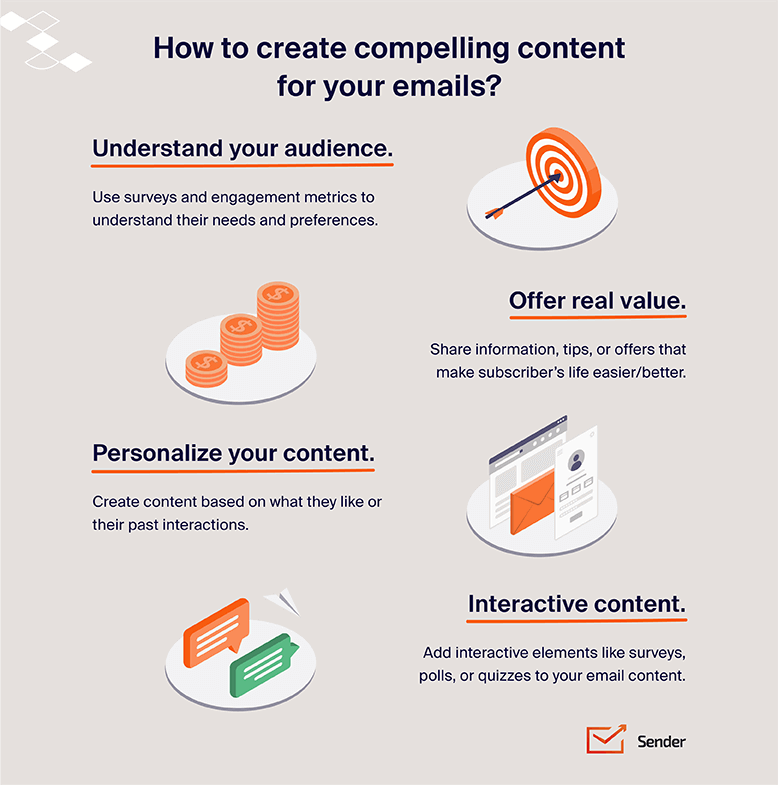
Clear Call-to-Action (CTA)
Writing the ideal call to action can make or break your marketing campaign. It’s one of those factors that will directly impact your conversion rates.
Your emails should have a clear and compelling CTA that readers can easily act on. Use creative and persuasive language to grab your readers’ attention and encourage them to act.
For example, check out the CTA below from Netflix.
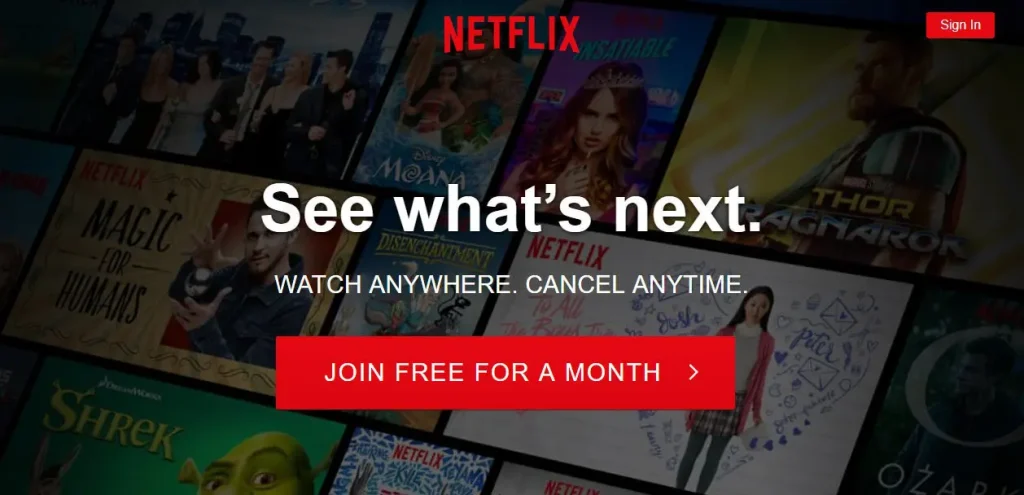
Not only does this CTA’s text (‘Join free for a month’) does a great job of encouraging you to try out Netflix’s free trial, it also packs-a-punch by using a combination of action words (e.g., ‘join’, ‘free’).
Here are a few ideas to help you get more people to click on your CTAs:
- Start your CTA with a solid command verb;
- Use words that evoke emotion or excitement;
- Give your audience a reason they should take your desired action;
- Take advantage of the fear of missing out (FOMO).
Employ Email Automation
Building relationships through email marketing and lead generation is like nurturing a friendship: it requires time and effort. And if you throw email automation into the mix? That’s when the magic happens.
As most of you will already know, email automation is the key to nurturing customer relationships. It helps to provide timely, personalized, and consistent communication, all done in the most cost-efficient way possible. That’s exactly why automated emails stand second behind transactional emails for unique open rates at 41%.
To make email automation really work, encourage two-way communication—ask for feedback, run a quick poll, or simply invite them to hit reply. People like to feel heard, and that helps your emails stay welcome in their inbox.
Also, mark the moments that matter. A little “Happy anniversary” or “Thanks for your first order” with a special freebie goes a long way in fostering those leads.
Use A/B Testing
With split testing, you can eliminate guesswork from your email marketing campaigns. You can do this by testing specific aspects with a small group of recipients (Groups A and B), then send the best-performing campaign to the rest of your audience.
Split testing is also a quick way to maximize your open and click-through rates since you’ll send your subscribers the best-performing emails.
The most defining elements in split testing are:
- Content;
- Subject line;
- Call to action;
- Time of day and week;
- Personalization.
Once you choose the elements to test, you can use the A/B testing tools in your email marketing software to start doing the test.
Use Gated Content and Content Upgrades
Gated content is online content you can only access after providing your contact information.
The content could be anything: videos, articles, or white papers. The form may only ask for your email address or include other personal info, such as your name or phone number, in exchange for access.
Here’s an example:
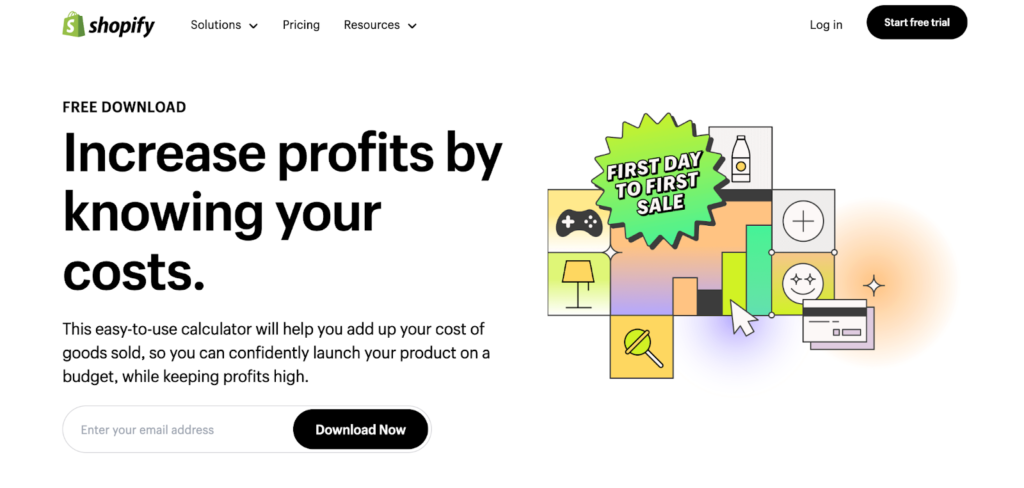
Gated content or lead magnets are effective because they incentivize providing personal details. Typically, visitors will find their way to your site via a blog post they found online.
If that blog post solves their problem, they may want to hear more from you. And you can give yourself another stream of valuable leads by designing an attractive gated content offering.
An example of gated content is content upgrades, which add to a discussion and are a follow-up to the content your readers love. Content upgrades are effective since they’re contextual and relevant without being invasive. So, the reader’s interest is established, making them more likely to convert.
Use Email Lead Generation Tools
Lead generation tools streamline the lead generation process. Don’t just think of these tools as a data-capturing solution. When used correctly, they can automate your entire lead generation pipeline and even convert strangers into customers on autopilot.
Experienced players use different types of email lead management tools to streamline their efforts. Here are some of the most common types and how they help improve the process:
| Type of Tool | Utility |
| Opt-in form builders | Design compelling and high-converting opt-in forms for capturing lead information from the website |
| CRM software | Manage and analyze customer interactions for targeted and personalized marketing strategies |
| Landing page builders | Design landing pages that are optimized to convert visitors into leads |
| Lead capture and qualification tools | Used to create interactive forms that capture and qualify leads based on their inputs for targeted follow-ups |
| Email analytics and tracking tools | Used for insights about user behavior, campaign performance, and conversion rates for refining lead-generation tactics |
| Email marketing automation platforms | Helps you capture leads, manage your contacts, automate targeted email campaigns, segment your email lists, personalize messages based on user behavior, and more. |
Sender can handle everything you need to execute your email marketing strategy. From visual automation workflows to high-converting forms, Sender is designed based on email marketing best practices to save you time on recurring tasks related to lead generation and nurturing.
Lead Scoring & Qualification
Lead scoring is a powerful asset in email marketing that helps you identify which prospects are most likely to convert. This is done by assigning values based on specific actions and behaviors, like email opens, link clicks and website visits.
Combined with demographic data, such as job title or industry, this approach is particularly effective for email marketing’s b2b lead generation, helping you rank leads according to their interest and buying potential.
Fun fact: 75% of businesses see increased conversion rates with lead scoring, which only proves its effectiveness.
Once you have your leads scored, this is where qualification comes into play. In simple terms, lead qualification is an in-depth evaluation to find out which leads are truly sales-ready. This process ensures your team concentrates on leads with the highest likelihood of becoming paying customers, rather than wasting time and resources on wishy-washy users.
Make the Most of Social Media Channels
With people spending significantly more time on social media than on email, it’d be foolish of us not to tell you to use this to your advantage.
Once you’ve established your brand through email marketing, showing subscribers—especially potential leads—that your company is active and credible on social media will increase their confidence in your services.
Here’s a good example by Solo Stove of utilizing social media channels to boost their email marketing game:
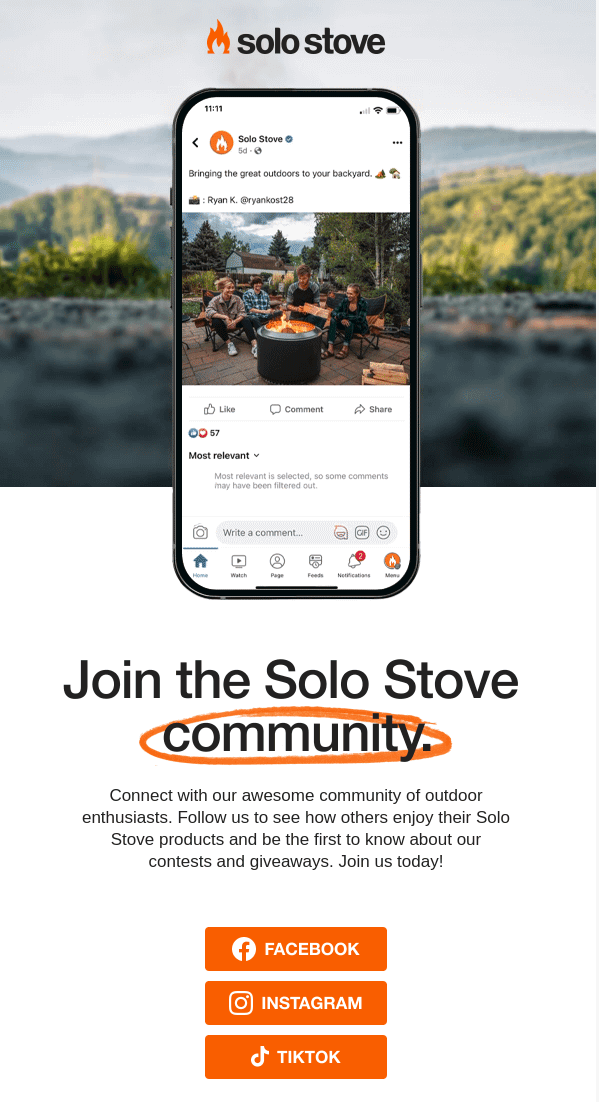
To squeeze the most out of this approach, here are a few ways to inject social media into your email marketing plan:
- Include social proof snippets. Embed customer testimonials, reviews, or user-generated content from your social channels directly into your emails;
- Cross-promote exclusive content. Tease social media-only content, behind-the-scenes footage, or live events in your emails. This drives traffic between platforms while making subscribers feel they’re getting insider access to your brand’s full experience;
- Add social follow buttons strategically. Place social media buttons in your email signature and key campaign emails naturally. Position them as ways to “stay connected” rather than just follow requests.
Typical Errors in Email Lead Generation Emails
You’re putting time and effort into your email lead generation, but are you seeing the results you want? If not, you might be making one of these common mistakes:
- Poor subject lines. A boring or generic subject line is a surefire way to get your lead generation email ignored. People are flooded with emails every day, so your subject line needs to grab their attention and make them want to learn more;
- Weak or missing call-to-action (CTA). What do you want people to do after reading your email? Download a resource? Visit your website? If you don’t clearly tell them, they probably won’t take any action;
- Lack of personalization. Nobody likes to feel like just another name on your email contact lists. Personalizing your email marketing leads, even with something as simple as using the recipient’s name, shows that you’ve taken the time to understand their needs. This can significantly improve your chances of getting a response;
- Not highlighting benefits. What’s in it for them? People are more likely to engage with your email if they understand how your product or service directly benefits them. Highlight the value proposition clearly and concisely, focusing on the positive outcomes for the reader;
- Ignoring mobile optimization. Many people check their email primarily on their phones. If your emails aren’t optimized for mobile devices, they might be difficult to read, leading to frustration and deletions;
- Overly long content. Keep your email content concise and to the point. People are busy and don’t have time to read long, rambling emails. Get to the point quickly and make it easy for them to understand your message.
Creating Lead Generation Email Funnel
If you want a more effective and affordable way for lead generation through email marketing, look no further than Sender. It features a user-friendly yet powerful dashboard for sending emails and SMS messages.
You can easily create a lead generation email funnel. Use Sender’s visual automation builder to set up a behavioral automation sequence. Add forms to pages that drive maximum traffic, welcome emails for new subscribers, and a drip nurture sequence to move subscribers further into the buyer’s journey on autopilot.
If you want to get started with creating a mail lead generation funnel, check out the following tutorial for setting an automated funnel sequence on your website:
Remember, the best way to take advantage of these tips is to act. So, why not create your first lead gen campaign today?
You might also find these articles interesting:
